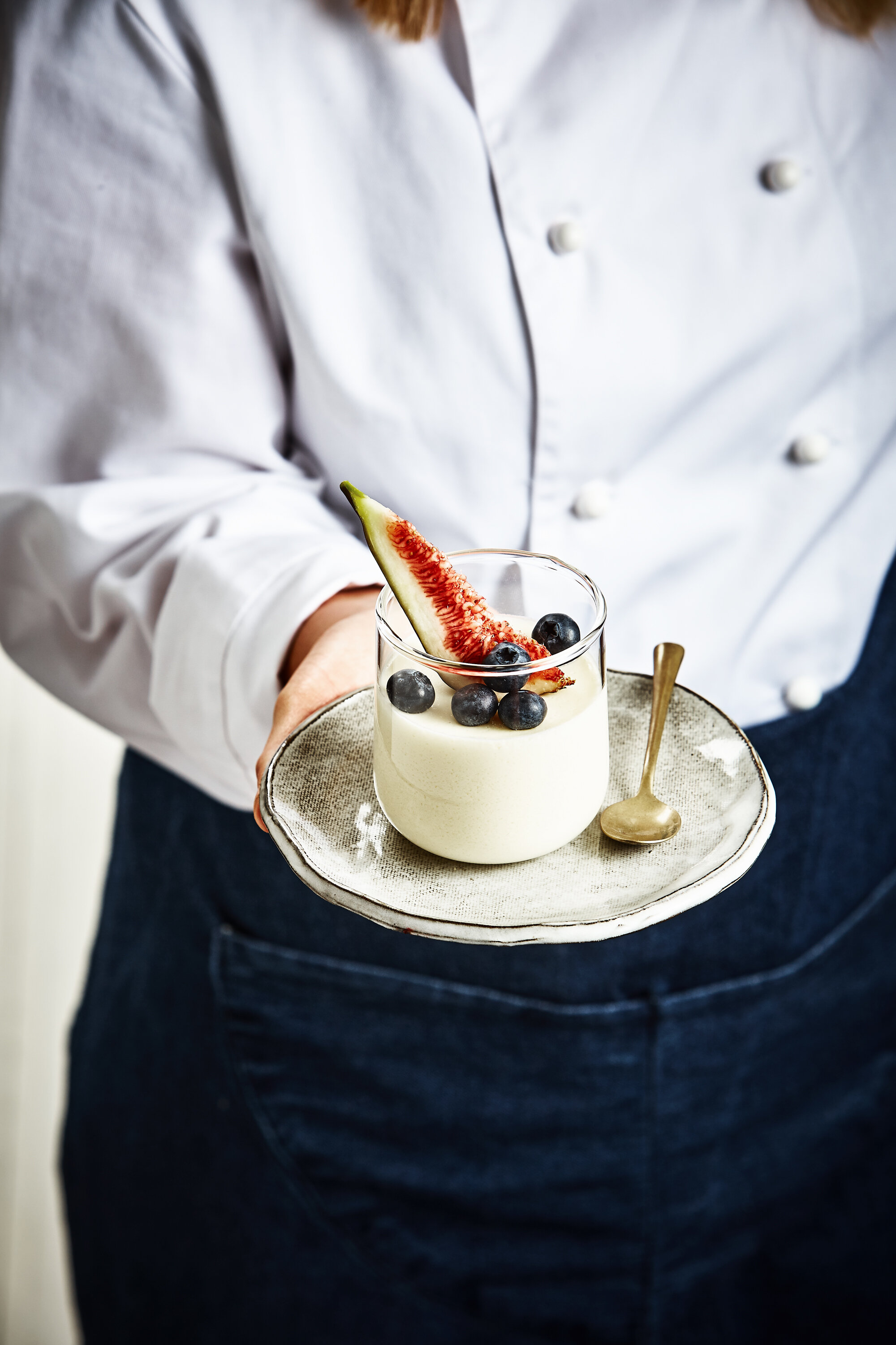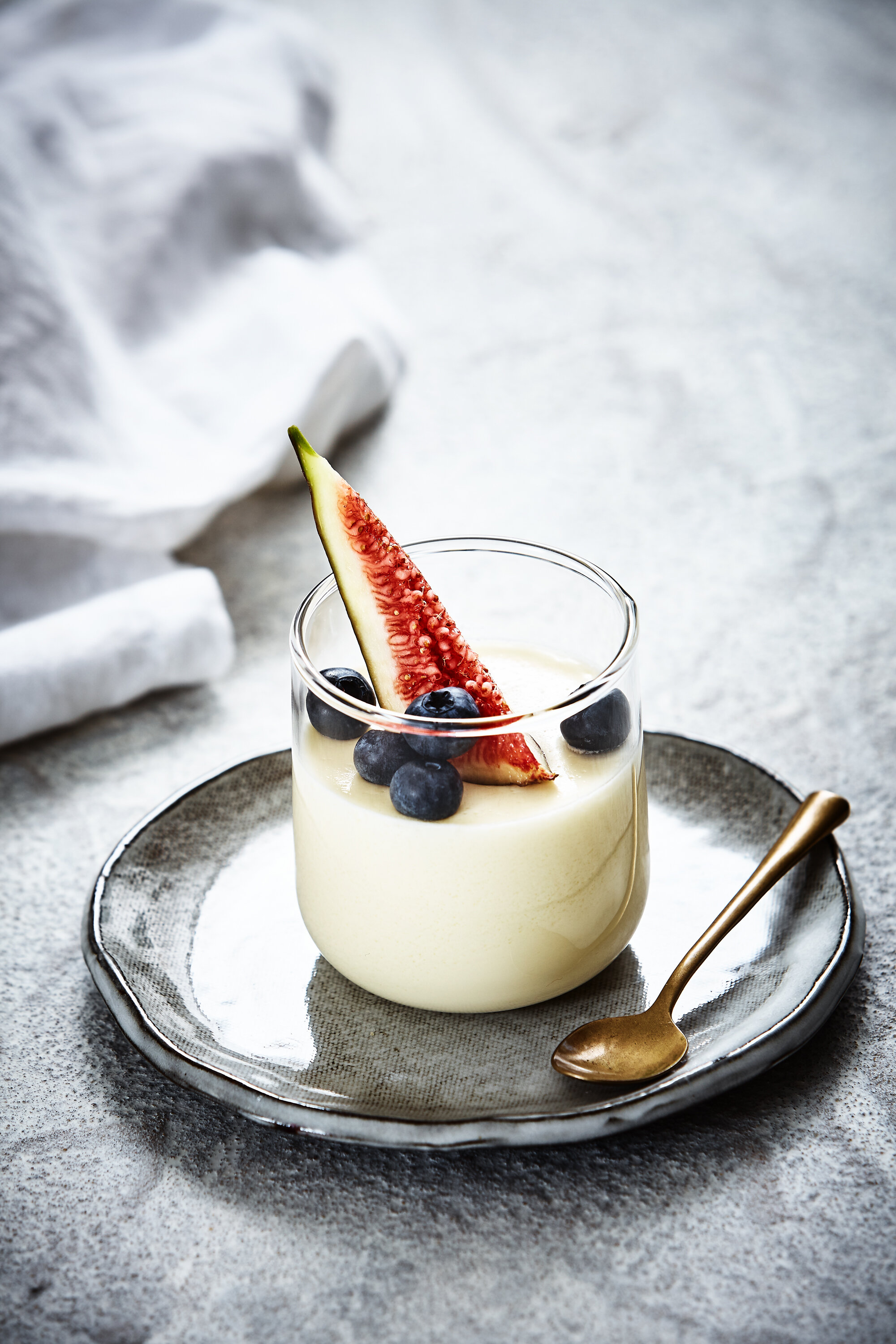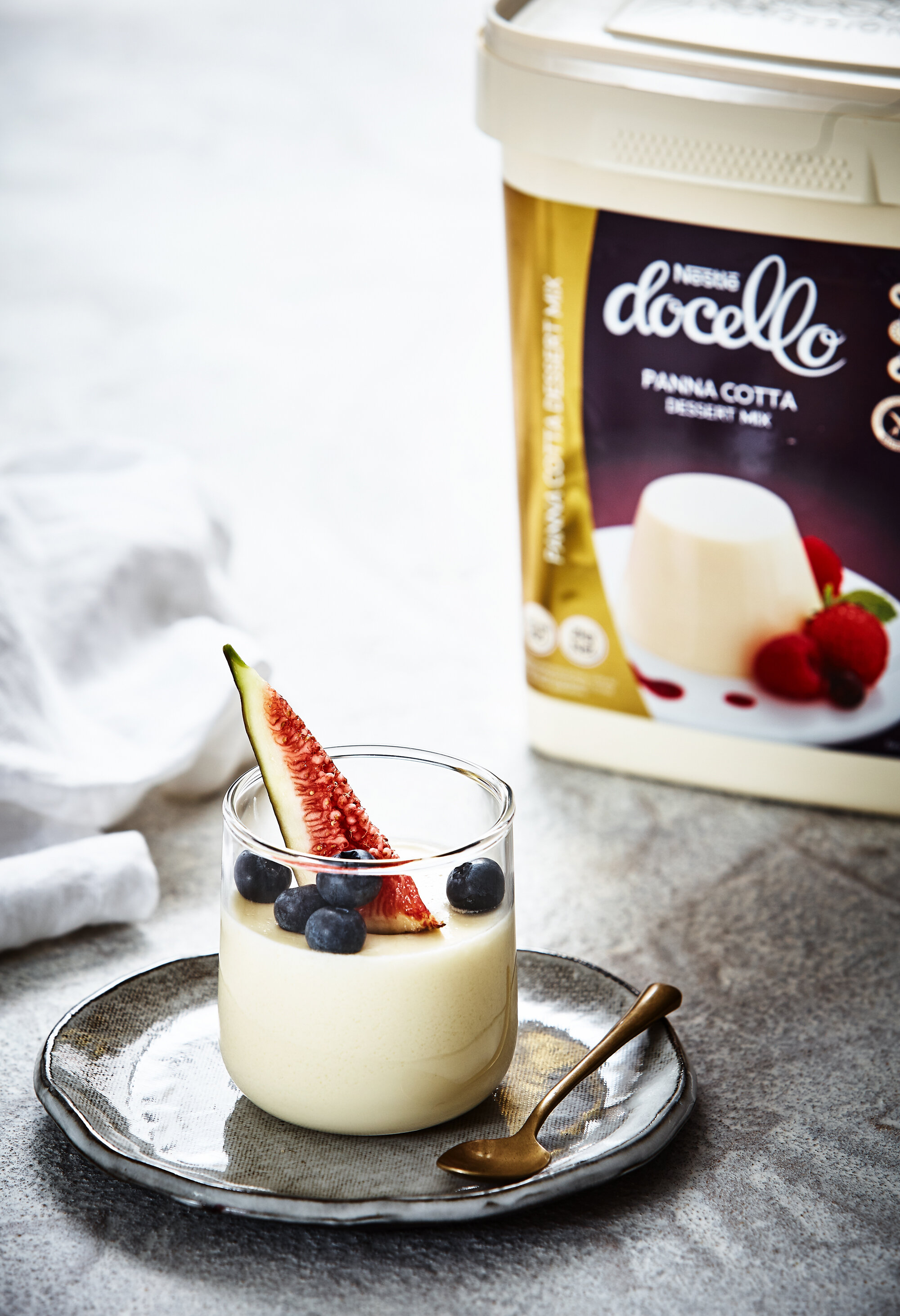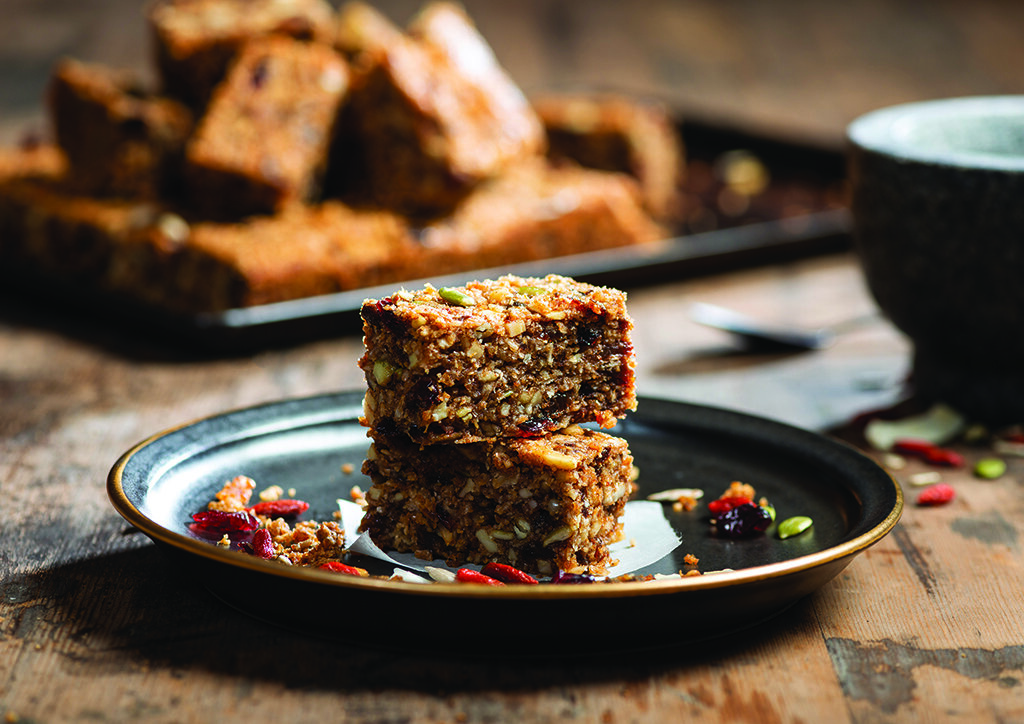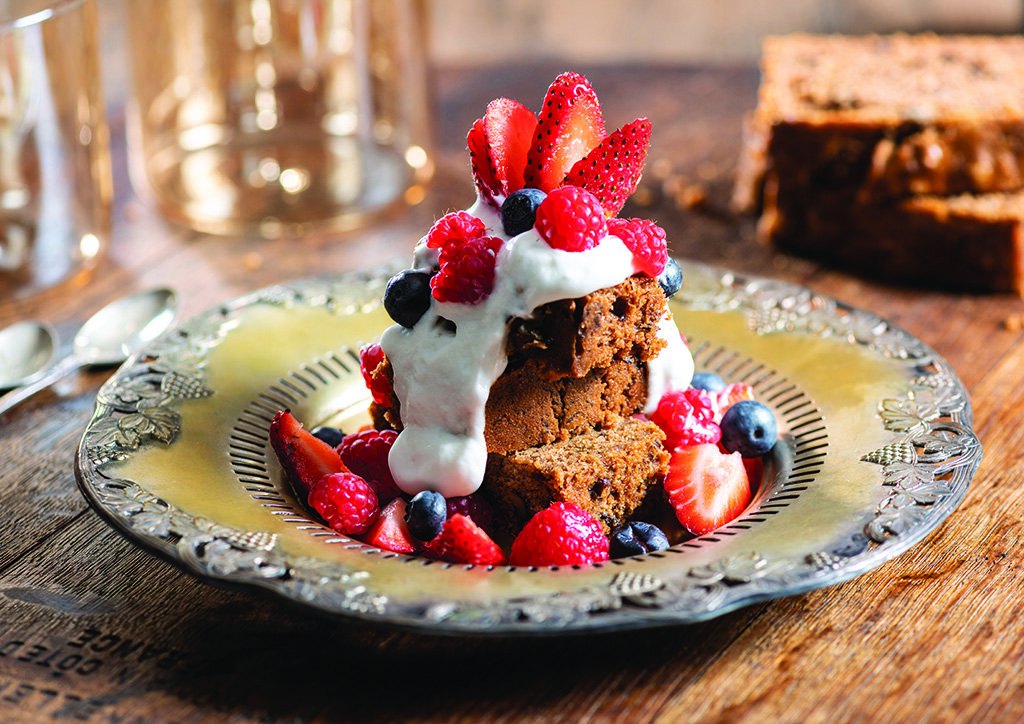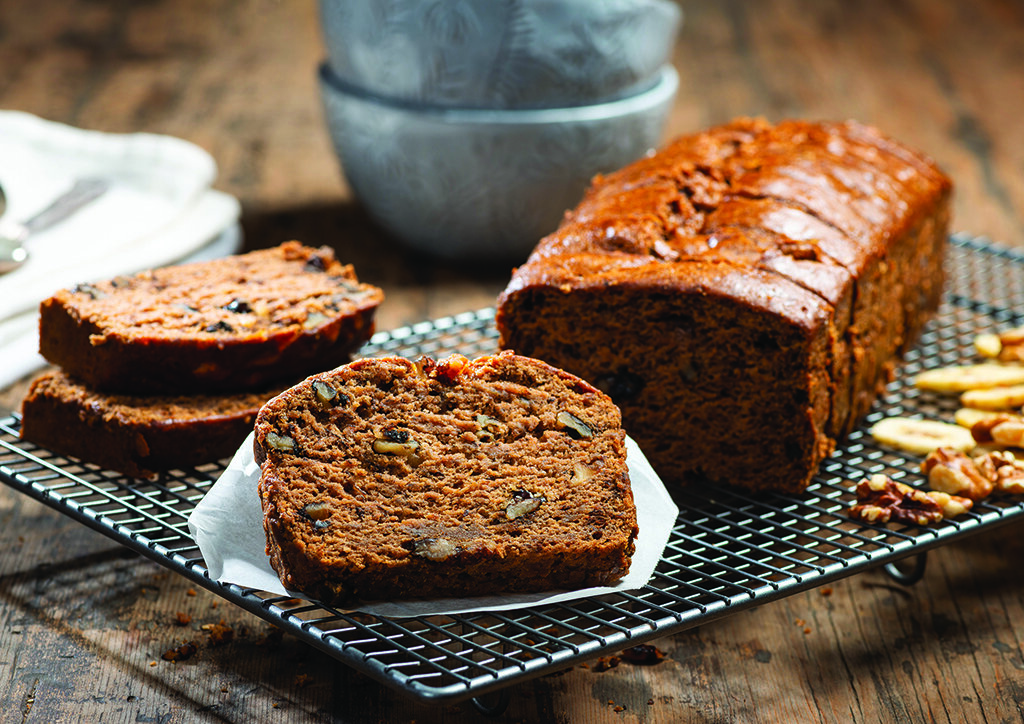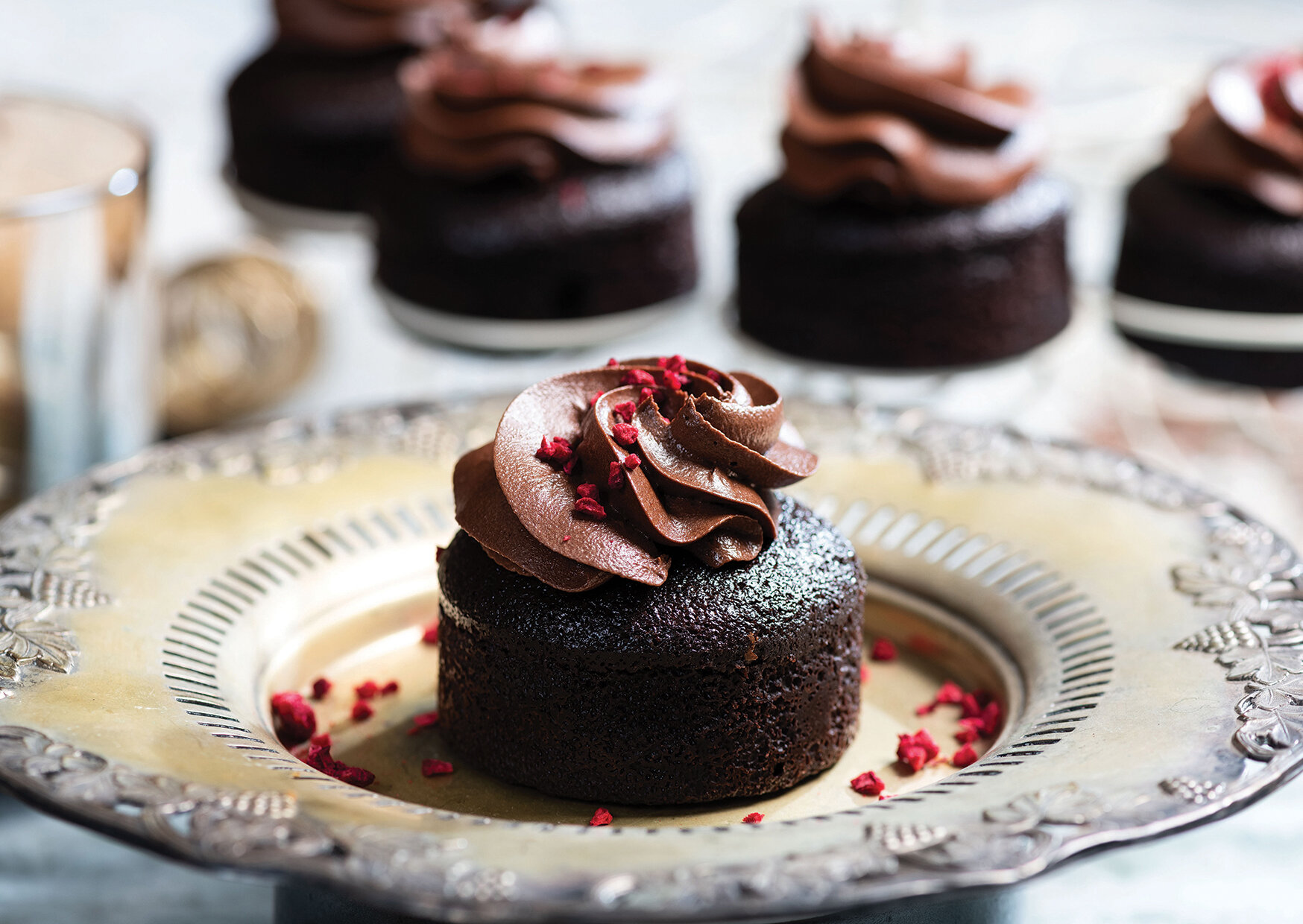Readymade products make serving distinctive desserts simple
IT MAY BE DIFFERENT FOR TOP END RESTAURANTS, but in most of today’s understaffed and time-poor commercial kitchens the days of preparing desserts from scratch are long gone. No wonder then that suppliers have stepped in to fill the gap with readymade products which you can serve as is or either add a distinctive coulis, topping or other finishing touch and present as a stylish signature dessert which will keep customers coming back.
The focus today is on presentation – making it colourful and ‘Instagrammable’ – and high quality ingredients that will deliver on the all-important flavour and mouthfeel.
“When you’re working on a tight schedule and you have a variety of staff members across different shifts, it’s pretty difficult to ensure consistency of presentation if you’re preparing from scratch, especially when working with desserts,” points out Mark Clayton, Executive Chef at Nestlé Professional. “Many of the classic desserts like Panna Cotta or Crème Brulee are not only time-consuming but they’re also notoriously difficult when it comes to maintaining consistency. One slight variation to the cooking time or the ingredient composition and you can end up with a wide divergence in appearance, texture and taste.” It’s for this reason, Mark says, that readymade dessert mixes for Panna Cotta and Crème Brulee have proven to be big sellers in the Nestlé Docello dessert range.
Flavour profile close to ‘from scratch’
“The presentation is consistent every time and their flavour profile is close to from-scratch. They’re gluten free so you can serve them to a wide customer base including children, adults and seniors and they can be presented as is or dressed up to make an enticing finale to any meal.”
Mark adds that products such as these are ideal for those restaurants which don’t have a large dessert offering but need to include a limited choice on the menu. “We’ve been doing a lot of work with the Asian community around these products because we find their customers see them as something different,” he explains. “Panna Cotta and Crème Brulee aren’t part of traditional Asian cuisine so for an Asian restaurant to add them to the menu creates a point of difference, gives customers something new to try and it’s a very simple, cost-effective solution.”
In keeping with this focus on providing solutions, Nestlé Professional has also introduced a premium 70 per cent couverture chocolate under its long-established Plaistowe brand for the higher end of the dessert market – such as functions and top-end restaurants where customers will pay a premium for from-scratch. “A lot of our work is around identifying and filling gaps in the market, and the launch of this product fills a definite gap in the quality chocolate area,” Mark says. “This is the chocolate you use when you want a great quality finish for your dessert – that high cocoa content adds flavour and texture. You can use it for all foodservice applications, but where it really shines is when you’re making a dessert and perhaps you want a chocolate dome to sit on top which is crisp and reflective. Once it’s tempered it delivers that perfect high-end finish.”
I&J Sweet Bao buns
Demand growing for greater flavour complexity
The past few years have also seen a move towards increasingly complex flavours and a mix of sweet with savoury – such as salted caramel or beetroot with chocolate. “The move is towards greater flavour complexity and away from the more basic tastes of the past, in keeping with our increased cultural diversity,” explains David White, Executive Chef at Simplot Australia, which has carved out a successful niche in the dessert market for Bao Buns, a product most of us would think of as containing savoury fillings [READ ARTICLE >] But as David points out, the neutral flavour of Bao Buns makes them equally suitable as a dessert offering, which set him thinking about possible dessert recipes which would showcase the product’s potential when served not only with Asian accompaniments, such as green tea ice cream, sesame praline and ginger syrup but other cuisine styles like Greek (honey syrup and walnut) or the contemporary flavours of chocolate-banana and salted caramel.
Another rapidly growing trend is the demand for vegan food, and as that means no egg or dairy products, it can provide a challenge for the creation of desserts. But major supplier Priestley’s Gourmet Delights has tackled this head-on and over the past 12 months has had considerable success with its vegan range.
“We launched with a beautiful individual vegan Chocolate Mud Cake which is topped with a lovely rosette that looks like a flower and freeze-dried raspberries, and it exceeded all expectations,” says Priestley’s Tracie Heyes. “We followed that up with a vegan fruit and grain slice which again outperformed what we were expecting and showed us the demand is well and truly there.” Priestley’s has since added a third product to the range – vegan banana and walnut loaf.
Vegan desserts now in demand, along with gluten free
“Vegan is now a focus of our new product development – it seems to have as much market traction as gluten free did when that first started to gain popularity,” Tracie says. She acknowledges that finding ingredients to replace the staples of egg, butter, cream and milk can be a complex and time-consuming process. “Egg in particular, as it’s a binding agent, and that’s why we have food technologists who specialise in understanding the chemistry of recipes. One of the challenges for us has been coming up with a combined gluten free and vegan product, but watch this space – we have something coming out soon. It’s taken a while to develop but we’re just about there.”
Tracie emphasises that these days the flavour, texture and mouthfeel of vegan products has to match their non-vegan counterparts. “The market is not going to buy anything that doesn’t taste great and that’s particularly true of desserts. We were incredibly successful with gluten free in having great-tasting products and we’re now trying to match that with vegan. Taste is not just about flavour, texture is a big part of taste too and people are looking for a combination of different textures – a bit of crunch with a bit of smooth – they want contrast, light and shade in their food. And when you have products which are gluten free or vegan and they hold their own against the regular varieties, you can serve them across the board to all your customers.”


